Corona Render for Cinema 4D Beta 1 released
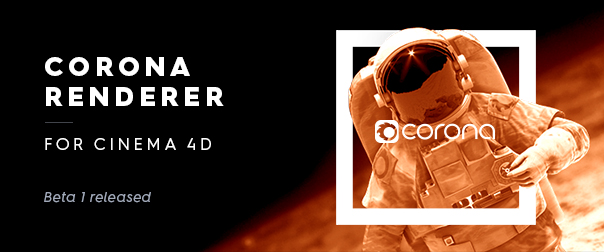
We are pleased to announce that Corona Renderer for Cinema 4D Beta 1 is released!
The main purpose of Beta 1 was the implementation of Interactive Rendering. To be able to do that, we have rewritten a big part of the plugin (nearly every part of the plugin was touched), so it took quite a long time to stabilize all of Corona Renderer with so many changes.
The good news is that this big rewrite allowed us to implement Interactive Rendering that includes support of standard Cinema 4D and 3rd-party shaders, and that it also allowed us to quickly implement the Shadow Catcher and finally native Material stacking, so I am sure you’ll agree it was worth the wait!
During the development of Beta 1, we updated twice to the new core, first to 1.6 and then to 1.7.2, which is the most up-to-date core. We also released 21 daily builds, so we’d like to thank all of you for testing them and helping us to finally release the stable version!
Compared to the previous Alpha version, there have been a huge number of bug fixes (some longer-existing bugs still persist, but that’s why we’ve always had Beta 2 planned), and there have been a lot of new features and new functionality implemented.
Read more!
COMPANY NEWS
I have decided to take this opportunity to inform you about the recent news, changes and improvements within Render Legion which we plan for 2018. Some of our plans still have to be kept secret, but I am able to reveal some of them.
THE TEAM
In 2017, we hired 8 new members onto our team, taking the total to 25. We plan to grow our team significantly in 2018: at the moment we have 29 new positions planned. We are hiring not only developers – who will boost the development of the 3ds Max and Cinema 4D plugins and the Corona core, and will also drive the development of our future products – but we are also looking for Support Representatives, Project Managers, and Researchers.
If you are interested in working with us, please be sure to check our Jobs section regularly, as we update it quite often. We are dedicated to improving what we have, and to deliver better products and better services for you, our beloved Coronauts.
Now, together with our bigger brother Chaos Group in the back, we are encouraged and able to reach greater heights and achieve more goals, and we are committed to walk the talk!
DEVELOPMENT
3ds Max plugin
Future releases of Corona Renderer (3ds Max and Cinema 4D) will focus more on compatibility with V-Ray. We have already started this process with the 3ds Max plugin, and the next release (Corona Renderer 2 for 3ds Max) will expose some of the cross-compatibility, while the subsequent version 3 should bring the majority of cross-compatibility features.
You can check our roadmap here: https://corona-renderer.com/roadmap
Cinema 4D plugin
Development of the 3ds Max plugin is now almost frictionless, so we have decided to commit ourselves even more to delivering a strong and stable Cinema 4D plugin. It is safe to say that we will put all our spotlights on to C4D from now on – we have already hired a fourth developer for the Cinema 4D team, and the C4D team will receive a dedicated Product Manager and Support Specialist later this year.
Check our roadmap here: https://trello.com/b/dgI8vjDb/corona-road-map-cinema-4d
SketchUp plugin
Let’s admit it, the last year was not that successful for our SketchUp plugin: we had two developers who came, did a small amount of work, and then left. For the past few months, there has been virtually no progress on the plugin. We also hit some roadblocks in development, which did not help.
By the end of the year, we were faced with a tough decision on what to do with the plugin. Should we scrap it? Or maybe reboot the development from scratch? All the while, we had to evaluate if any of that made sense, especially now that our colleagues from ChaosGroup have released their strong V-Ray 3.6 plugin for SketchUp (please check it on CG’s website , it’s worth it!)
Our conclusion was a tough one, but after a lot of soul-searching we have chosen to end development of the SketchUp plugin for good. We have decided that it makes most sense for us to focus all our efforts and manpower on the Cinema 4D plugin, which is really promising and very close to the finish line.
I know that this kind of news is always hard to read – and even harder to write – but to be honest if we compare what V-Ray offers for SketchUp and what we have now, we have to be realistic and admit that they did a far better job than us.
So, now we would rather focus our time and effort on the Cinema 4D plugin where we think we can offer more. I am sorry to those who we have disappointed with this move, but we sincerely think it is the best possible one.
Next “undisclosed” plugin!
We have decided to do a couple of “test integrations” for Corona Renderer. The goal is to create something in a quick and dirty fashion, to evaluate the possibility of bringing Corona Renderer to other applications.
At the moment we are working on the first test integration which we will evaluate soon. All I can say at the moment is that the applications which we are testing are mostly from the AEC industry segment.
Thank you!
As always I want to thank you, our users, for your enthusiasm and passion for Corona Renderer, and for your tireless testing – and yes even for your feature requests! You are all part of the Corona team along with us.
Thanks,
Adam
BETA 1 QUICK FACTS
Here is the overview of the changes since Alpha 6!
New Additions
- Cinema 4D R19 fully supported
- Interactive Rendering now fully supported
- Native stacking of materials supported
- Shadowcatcher material added
- New improved sampler, for less noise in the same number of passes / same time
- Dispersion and Subsurface Scattering added to the Corona Material for more realism when required
- Render Selected Object functionality added
- Resume Render functionality added to VFB and native Picture Viewer
- Corona Image Editor added to the installer, for macOS and Windows
Improvements
- LightMix “bake to scene” functionality greatly improved
- Team Render now close to fully functional (remaining limitations to be removed in Beta 2)
- A LOT of bug fixes!
DOWNLOAD
If you want to get straight to the download, you will find the latest version at:
https://corona-renderer.com/download/
And now all the new features and improvements in detail!
WHAT’S NEW
Interactive rendering
Interactive rendering is now fully supported in the Corona VFB. It detects all changes in the scene such as camera movement and parameters, editing of materials and geometry, environment changes, changes to objects and materials from Expresso, and more.

(Free scene from Slashcube)
Native stacking of materials
This long-awaited feature is finally implemented in Beta 1! Cinema 4D lets you assign as many materials on an object as you like, and we now fully support this feature in Corona Renderer.
Materials can be stacked (layered) on top of the previous, and when a higher material is partially transparent or doesn’t cover the whole lower material, then the lower material is visible as expected. This means that stickers and labels can be created very easily, for example.
This new feature also brings the possibility to assign materials to front, back or both sides of a polygon, and both features work seamlessly together and with polygon selections, layered materials, ray switcher, and so on.
(Free scene from Studio Heisenberg and Amr Moussa)
Shadow Catcher material
The new Corona Shadow Catcher material allows you to seamlessly and realistically combine your 3D scene with an HDRI map or a backplate image. This allows your objects to interact with the existing image by occluding lights and casting shadows as if they were there when the image was captured!
Lining up your object or camera’s point of view is made simple thanks to the Interactive Renderer, too.
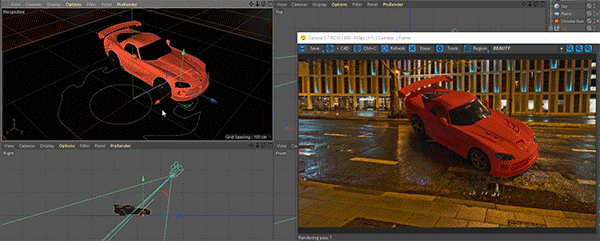
New improved sampler
Thanks to the update to the latest core, we now use the new DMC sampler as the default sampler. This new sampler is capable of speeding up your renders by up to 2 times i.e. it produces much less noise for the same number of passes as the previous default sampler, so you can render less passes (which means less time) for the same amount of noise.
The comparisons below were rendered for the same number of passes in both the old and new samplers, with one scene without materials to emphasize the noise alone, and the other a real-world use in a full scene:
Dispersion and Subsurface scattering
More great features which come with the the new core are Dispersion and Subsurface Scattering, which are fully integrated into the standard Corona Material. These allow you to produce more realistic renders than before in scenes where these effects are required.
(Free dragon object from TurboSquid)
Render selected object
This is another feature which users have been asking us to implement for a while! It allows you to render only the selected object from the viewport (and unselected objects will not be shown in the rendered image), or users can specify what to render/not render in an include/exclude list. The feature works both in a final render, and in Interactive Rendering.

(Free scene from Studio Heisenberg and Yarko Kushta)
Improved LightMix “bake to scene” functionality
The LightMix “>Scene” button can “bake” adjusted light parameters from post-processing into the scene lights, and now also supports baking of instanced lights. Baking is useful when you want to increase the intensity of a light to a much higher level, but doing this purely in LightMix would also increase the noise (like in the sample image shown below).
In such cases, the new values set using LightMix can be transferred to the scene and the image re-rendered with the brighter lighting, giving less noise as the renderer can work with the higher intensity at render time.
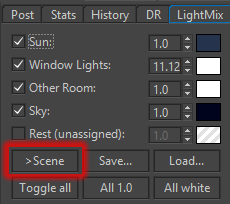
Team Render
Team Render is much more stable, and should be close to fully-functional. Known limitations are – it is best used from the native Picture Viewer, and it cannot use Noise Level, Adaptivity or Denoising yet. These limitations will be removed in Beta 2.
Resume render
If you were forced to stop rendering before an image was complete, you can now save this “half-rendered” image and resume the rendering later. This feature works for the VFB and the Picture Viewer.
You can also use this feature to add additional passes on top of an already rendered image, if you later decide those would have been useful. You can choose to resume the last render if it is still loaded in the VFB, or simply save the render to Corona EXR (.CXR) format to be able to use this feature at a later time or date.
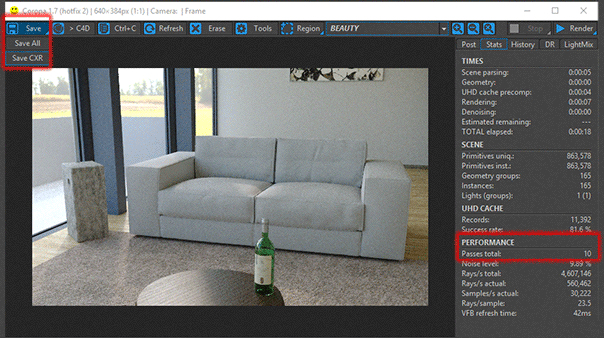
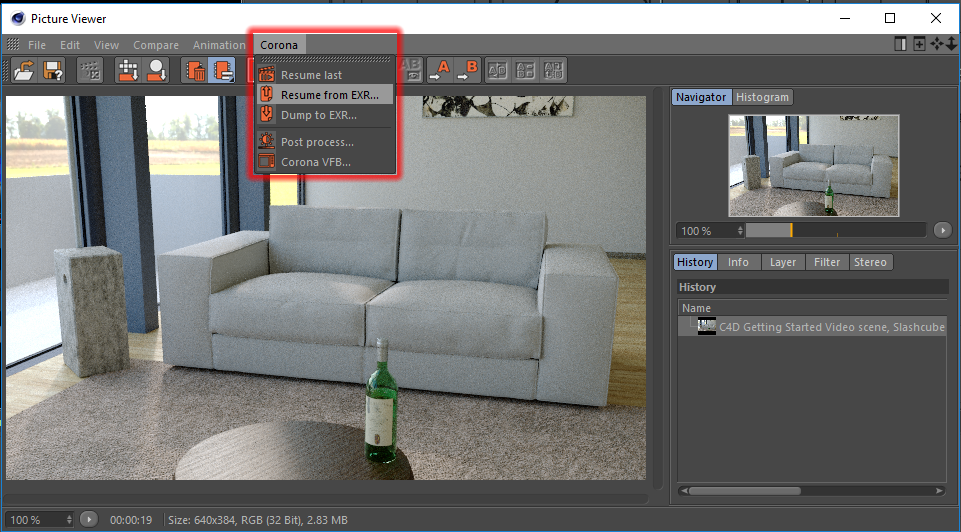
Support for C4D R19
Both Windows and macOS installers now include a version of Corona Renderer for Cinema 4D R19, and it is automatically detected during installation so you can easily start using Corona Renderer without any problem.
Corona Image Editor
For some time, the Corona Image Editor (or CIE as we like to call it) has been part of the 3ds Max installers. It offers rich and fast post-processing options for Corona EXRs saved from the VFB: LightMix, full-featured denoising, tone mapping, LUTs, bloom and glare, curves, blur / sharpen, vignette, etc.
Because Corona Renderer for Cinema 4D is also distributed for macOS, we ported the CIE to this platform too and added it to both Windows and macOS installers. Now the CIE can be used on both platforms without any limitation, as shown below using the free Paris Apartment scene from Slashcube:
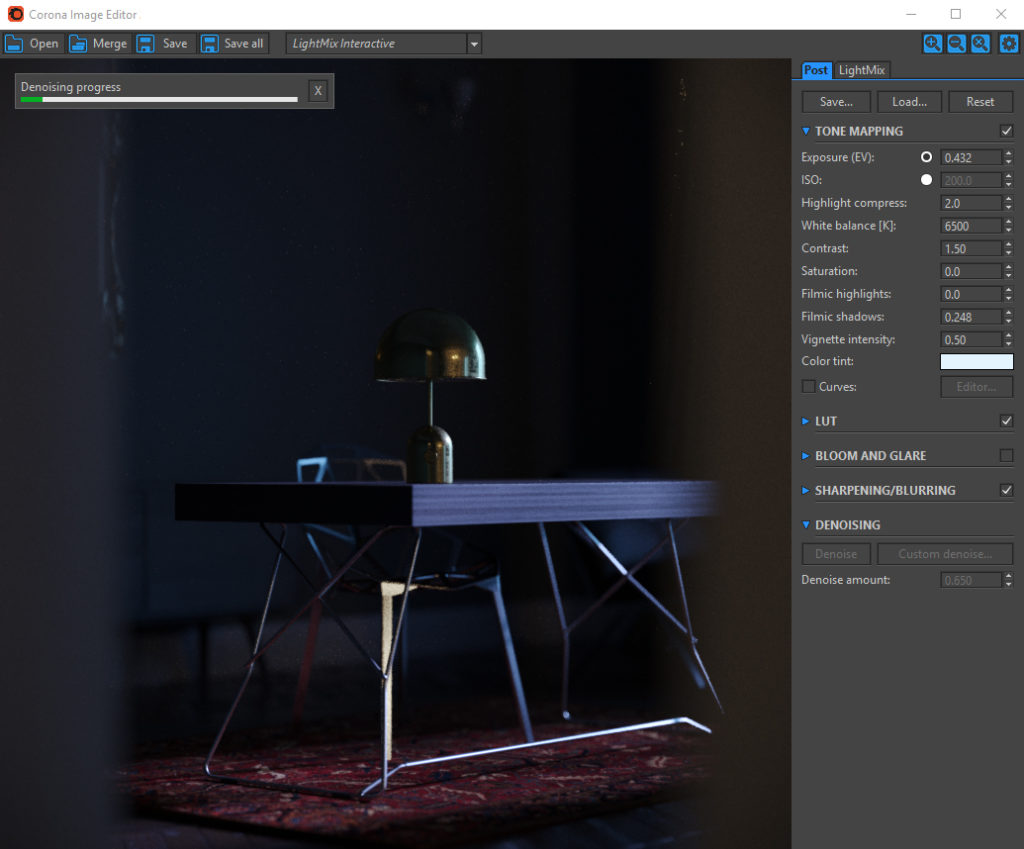
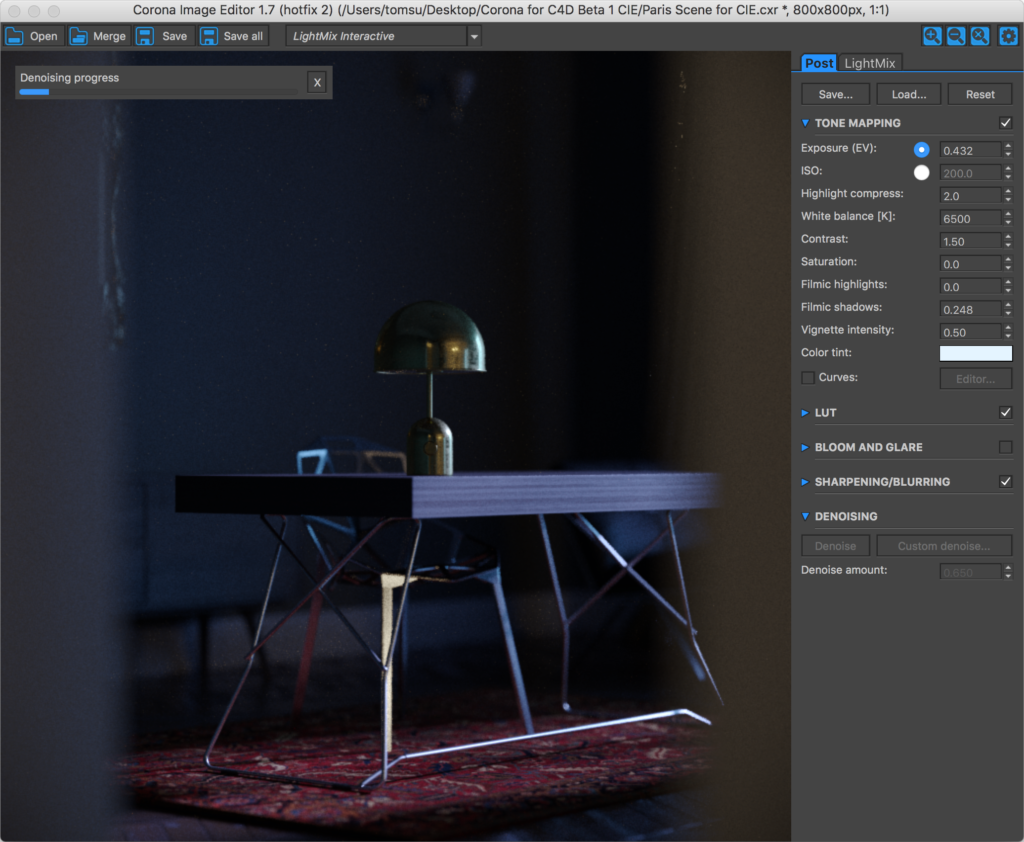
And of course there have been a great many bug fixes too. It all adds up to Beta 1 being a quantum leap ahead of the previous Alpha release!
WHAT’S NEXT
Now we move on to creating Beta 2, which will include the addition of Hair and Skin materials, the Node-based material editor, a Corona scene converter, further improvements to Interactive Rendering, a new implementation of Motion Blur, and more – follow progress on the Corona Renderer for Cinema 4D roadmap!
Thank you to our community for your testing and feedback!






Оставить комментарий
Ты должен быть Вход опубликовать комментарий.